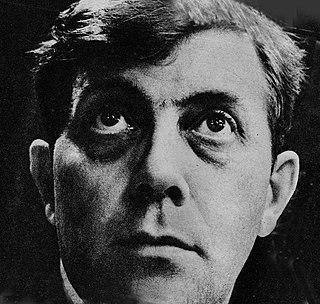Loading AI tools
Polish architect, graphic artist, and professor From Wikipedia, the free encyclopedia
Wiktor Zin (14 September 1925 – 17 May 2007 in Rzeszów) was a Polish architect, graphic artist, professor, architectural preservationist, cultural activist, and promoter of Polish history and culture.
This article needs additional citations for verification. (January 2024) |

Zin was born on 14 September 1925 in Hrubieszów. He finished architectural studies at Akademia Górniczo-Hutnicza in Kraków. In 1952 he received his doctorate, with further advancement in his professorial degrees in 1959, 1967, and 1979.
He first worked as a teacher's assistant and adjunct at Kraków's Akademia Górniczo-Hutnicza (through 1949), and later at the Tadeusz Kościuszko Kraków University of Technology as an adjunct (1954–1959), a docent (1959–1967), and finally as a full-fledged professor, 1967 onwards. Between the years of 1962 and 1967 he was the dean of the Faculty of Architecture there. From 1962 he headed The Institute of Architectural History and Landmark Conservation.
Alongside his academic work, Zin was involved in events benefitting the city as well as architecture and landmark conservation all over Poland. He was the general architect of Kraków between (1958–1964), the director of Studies on the Old City Complex (1960–1975), the head of the Cracovian Conservation Commission (1970–1978), as well as the president and vice-president of the Admirers of the History and Landmarks of Kraków.
In the years 1977–1981, Zin was the General Landmark Conservator as a part of the Ministry of Culture and Art in the rank of vice-minister. Between 1978 and 1983 he was the head of the interministerial Commission on the Conservation of Landmark Municipal Complexes. During the 1980s he was a lecturer at the University of Zagreb. A member of the Board of Polish Architects, the Society for the Protection of Landmarks in Poland he was the chairman of its board between 1975 and 1983. Professor Zin was also a member of the Mexican Academy of Architecture. On 28 January 1998 the Kraków University of Technology awarded him an honorary doctorate.
Zin is most well known in Poland as the host of the Polish TV series "Piórkiem i węglem" (With Pen and Charcoal). He was also featured in "Klub pod Smokiem" (Club Under the Dragon), "Szperacze" (The Seekers), "Spotkanie z zabytkami" (A Meeting with Landmarks), "Dźwięk i linia" (The Sound and Line), "Być tutaj" (To Be Here), "Nad Niemnem, Piną i Prypecią" (On the Niemen, Piną and Prypeć Rivers) "Spotkanie z prof. Zinem" (Meetings with Professor Zin), "Sztuka patrzenia"(The Art of Looking), "Nasze korzenie" (Our Roots), as well as "Opowieści domu rodzinnego" (Tales of the Family Home). He also hosted radio programs among them "Półgłosem i ciszą" (Half-silent and Quiet) in Radio Bis.
He also designed a number of sets for a number of plays and operas, as well as the author of a number of paintings. Zin also wrote articles for numerous publications both scholarly as well as for the general public.
Towards the end of his life he occupied the position of the Protector of the European Academy of Art in Warsaw, the director of the Polish Board of Urban and Architectural Landmark Conservation at the Kraków University of Technology, the Director of the chair of Art History and Culture at the University of Information Technology and Management in Rzeszów, a lecturer at Akademia Górniczo-Hutnicza in Kraków as well as the chancellor of the awards council for the medal "Polonia Mater Nostra est".
Zin was active until the end of his life – he died suddenly on 17 May 2007 as he was preparing for class with students at the University of Information Technology and Management in Rzeszów.
Wiktor Zin left behind his wife Aleksandra, with whom he had a son Szymon as well as a daughter, Monika.
Wiktor Zin's funeral took place on 23 May 2007 at the Rakowicki Cemetery in Kraków. The funeral mass was held earlier in the day at 11:00 am at St. Mary's Basilica in Kraków where 24 clergymen took part. After the Eucharist the coffin with Professor Zin's body left the basilica in the accompaniment of a traditional Góral ensemble. At 1:00 pm kondukt the funeral march led by the Metropolitan of Kraków Stanisław Dziwisz as well as Cardinal Franciszek Macharski left the funeral gates of the cemetery for the place of final interment. Eulogies were given by friends, colleagues, former students, the vice-minister of culture and national heritage as well as representatives of the city of Kraków, Hrubieszów and the voivodship of Lesser Poland. The lowering of the coffin into the ground was accompanied by the music of a traditional Góral funeral ensemble as well as two trumpeters who played the works Hejnal, Barka and "Va Pensiero" from the opera Nabucco by Giuseppe Verdi. The gravestone was covered by literally hundreds of wreaths and wildflowers which Professor Zin was so well known for adoring.
Author of around 50 scholarly studies and books, among the more important of which are:
Around 50 designs for churches as well as their interiors, both in his native Poland and abroad as well as:
Stage design for The Haunted Manor (Opera Wrocławska as well as Opera Bałtycka), The Duchess (Opera Bałtycka and the Tokyo Opera), Othello (The Grand Theater in Łódź), Dames and Hussars (The Grand Theater in Warsaw), Rigoletto (in Kraków) as well as others.
During the early 1980s as a vice-minister of Culture and Art he signed an agreement to return by April 1982 all of the exhibits brought to the National Museum in Warsaw after World War II from Gdańsk. The timetable was interrupted by the institution of Martial Law in December 1981, and the first exhibits were not returned until 1985 although many of them remain in Warsaw.[1]
Seamless Wikipedia browsing. On steroids.
Every time you click a link to Wikipedia, Wiktionary or Wikiquote in your browser's search results, it will show the modern Wikiwand interface.
Wikiwand extension is a five stars, simple, with minimum permission required to keep your browsing private, safe and transparent.